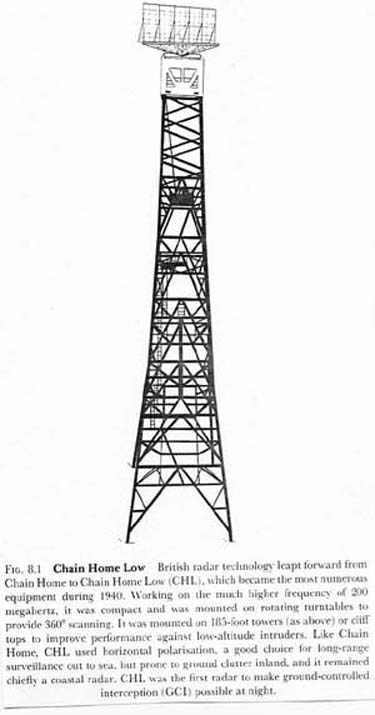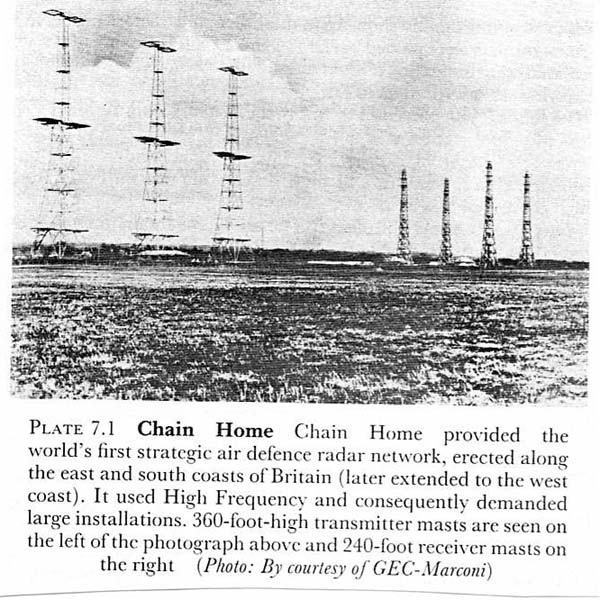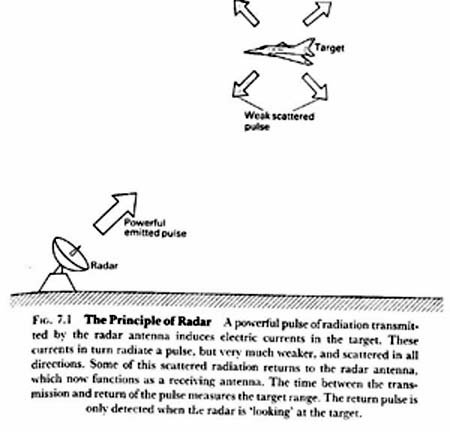
RAdio Direction and Ranging: radio waves can be directed, reflected just
like light

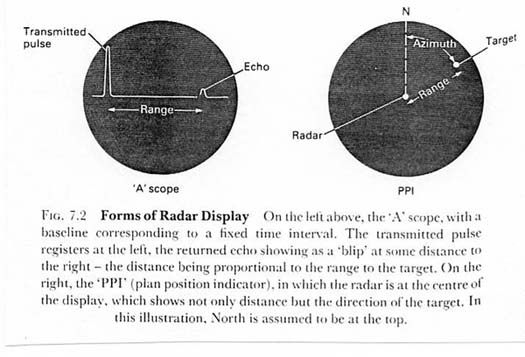
Intelligence Enters the Battle
The appearance of radio transmitting and receiving devices early in the 20th Century allowed modern states to wage war over ever greater distances and with ever more dispersed forces. Navies in particular, with their ships scattered over thousands of miles of oceans, depending on these instruments for precise coordination. But radio message traffic was easily intercepted—thus the need to encode operational messages. In the 1920s a German business firm had developed a machine, the Enigma, which seemingly offered an unbreakable means to encode and decode messages. The German Army and Navy (and later the Luftwaffe) quickly adopted the Enigma system to protect their communications.
But unbeknownst to the Germans, the Poles obtained an Enigma machine in the early 1930s, and their mathematicians broke into the German message traffic. In 1939 the Germans stopped the Poles from reading Enigma messages by making their military encoding machines more complex. But in August of that year, by presenting the British with both a machine and a full briefing on their work just before their country went down in flames, Polish intelligence provided the British with a theoretical and actual depiction of how the Enigma system worked.
Since those using the Enigma system changed the position of rotors each day, British codebreakers had to determine the new rotor settings every 24 hours. To do this, they could either rely on the capture of the German schedule for the daily settings—an unreliable means—or discover mistakes (cribs) made by German operators or stations (such as transmitting the same message heading at the same time each day). The resulting intelligence was codenamed “very special intelligence,” or Ultra.
March 1941: British captured German armed trawler Krebs during raid on the Lofoten Islands north of Norway. Along with the vessel they seized the enciphering tables for its Enigma machine.
May 1941: Royal Navy captures weather ship off the coast of Iceland. Captured ship along with Enigma keys for June.
Convoy escorts capture U-110; stripped the boat of all Enigma materials, including the keys for the highly secret “officers only” traffic.
Once Bletchley Park had a chance to analyze the German Navy’s radio traffic over May and June, British codebreakers began reading German transmissions to and from U-boats with great regularity. Consequently, even after the captured keys had run their course, the British had established enough cribs to read the traffic for the remainder of 1941.
Royal Navy task groups destroy U-boats’ supply ships. Germans investigate but do not change their operational methods because the Enigma is “unbreakable.”
… the technological aids the British were developing to attack U-boats were only slowly reaching the escort forces. Few vessels had yet received either new D/F equipment or the 271M radar. The new direction-finding equipment allowed escort vessels to pinpoint the location of U-boats at sea, while the new radar gave escorts better resolution at greater distances and with more reliability.Notes on Williamson Murray, Allan Millett,"Military Innovation in the Interwar Period," Cambridge University Press, New York, 1998.
Measure. Countermeasure. Counter Countermeasure.
Freya
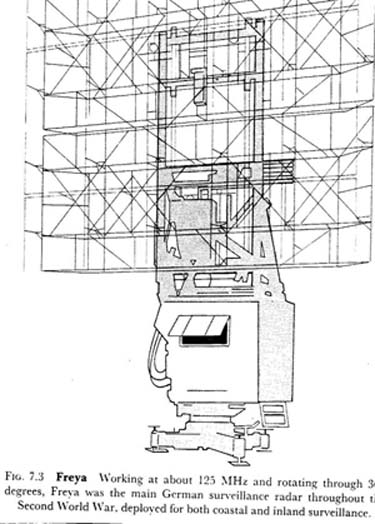
Wurzberg
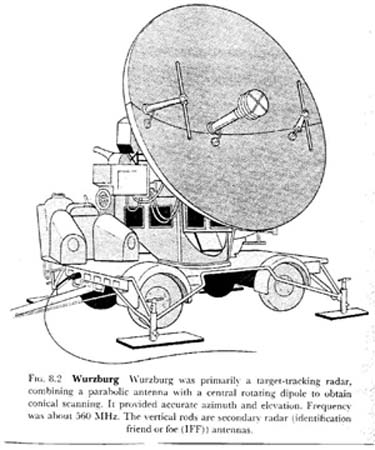
"The Germans seemed simply to have grafted their radar stations on their existing observer corps network which had neither the speed nor the handling capacity that the radar information merited." R V Jones
"It was operational efficiency rather than novelty of equipment that was the British achievement."
1938: 5 radar stations + mobile sets connected to filter room at Bentley Priory, nerve center of the air defense system
essential use of radar to avoid continuous patrols but rather to get the fighters to the right place at the right time for interception
quad punch of ultra (signals intelligence), OR (efficient use of resources), Leigh Lights (light up the target), 10 cm radar (find it)
Chain Home Radar
